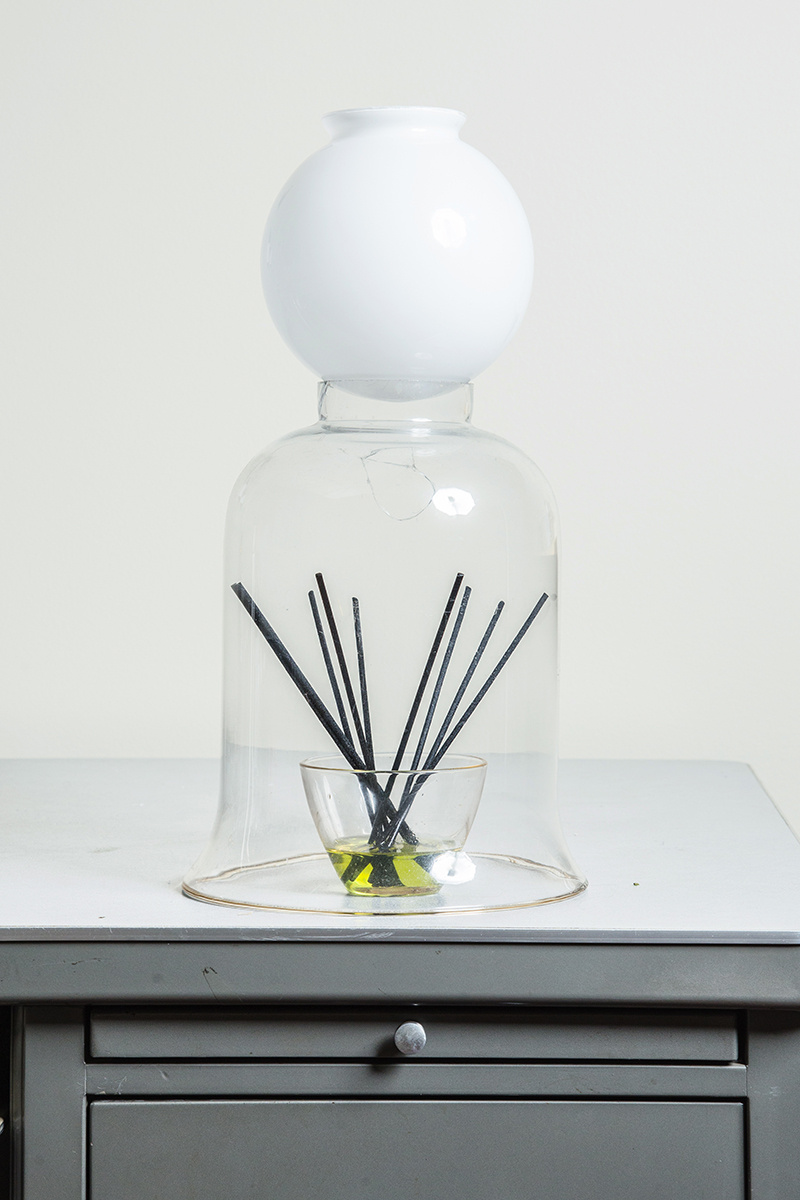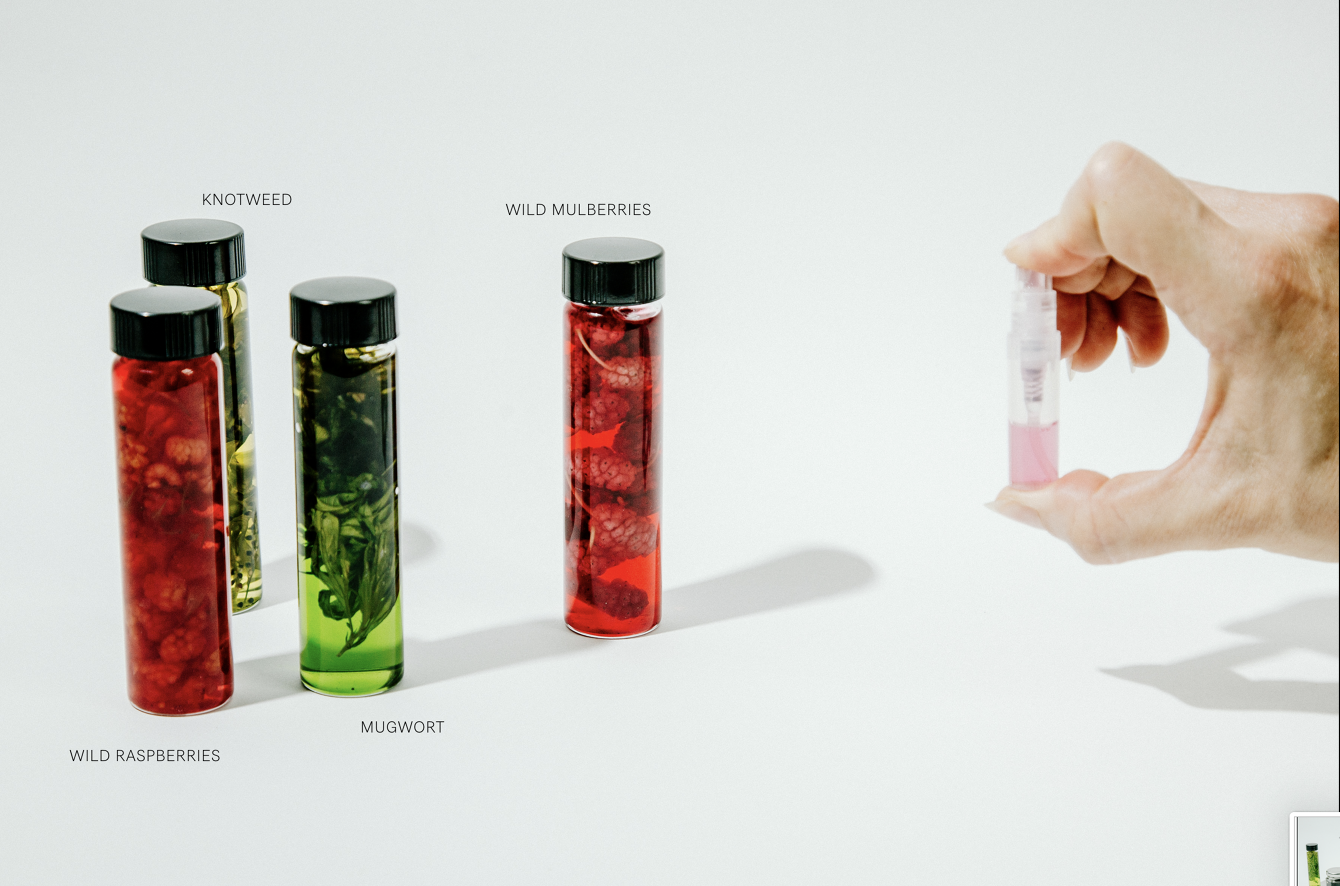
Extinct Armoatorium, 2022
Plexiglass, perfume of banana, dirt, and fungus
Artificial banana flavoring used in candy and ice cream do not taste like ‘real’ bananas because the flavoring is a chemical composition that ultimately reflected the sweeter taste of the now-extinct Gros Michel banana. The Gros Michel was the favored, monocropped banana in the United States until a fungus (fusarium oxysporum) wiped it out completely by the 1950s. We now consume the Cavandish variety, which is also under threat of extinction, as climate change is making it more vulnerable to disease. This hanging “aromatorium” allows one to experience a perfume of the ghost of the Gros Michel banana and the soil fungus that rendered it commercially extinct.
L'air de la Sécheresse (Air of Drought), 2024Perfume bottle, feral resin perfume case (pine needles, soil, resin, cardboard, concrete, plastic)
Drought perfume made with:
Alpha-pinene, beta-pinene
Scent released by trees in distress from drought.
Cabbage oil
Plants in the brassicaceae family release more VOCs as a defense and stress responses temperatures increase.
Cade oil
Smoke base note representing repeated and increased wildfires.



Lapses, 2021—ongoing
Scents of caraway, radish, cabbage, and pine needle; glass clouches; diffuser reeds
When the temperature rises, increased VOCs are released into the atmosphere due to mechanisms based on plant defense and stress responses. Some of these VOCs translate to increased smell. The archive includes the smell of cabbages and radishes (both in the Brassicaceae family), caraway, and pine, based on research that these plants and crops will smell more strongly in the future.
Adedayo O. Mofikoya, et al., “Foliar Behaviour of Biogenic Semi-Volatiles: Potential Applications in Sustainable Pest Management,” Arthropod-Plant Interactions 13, no. 2 (2019).
JS Yuan, et al., “Smelling Global Climate Change: Mitigation of Function for Plant Volatile Organic Compounds.,” Trends Ecol Evol 24, no. 6 (2009).
Jarmo Holopainen (Department of Environmental and Biological Sciences, University of Eastern Finland), email message to artist, 8 November 2021.



Stronger future scents, left to right: pine needle, radish (Brassicaceae), cabbages and Brussels sprouts (Brassicaceae) with cabbage oil diffuser, and caraway.
Olfactory Time Capsules, 2020
Vials, perfumers alcohol, various site-specific plants and organic matter
A series of olfactory time capsules created to preserve landscapes that might be altered by climate change and sea level rise.
Below: Foraged edible smells from the Hudson Valley, a place, like any other, that will be altered by shifting hardiness zones. That is: plants will move north as the climate warms, and may not be found in the same places in the future.

Below: Scent vials from threatened by sea level rise: Dead Horse Bay, Red Hook, and The Rockaways

These scents are meant to be olfactory archives, preserved in a hypothetical "smell bank" buried deep in the Scottish sea, similar to the Svalbard seed bank and undersea data cores.

